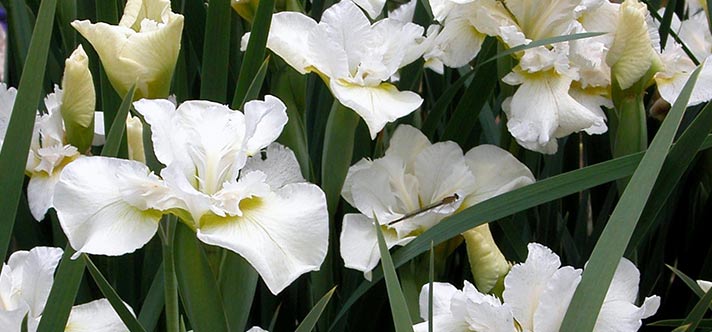How to grow iris ensata (Japanese iris)
Iris ensata originate in marshlands of Eastern Asia and need to be grown in an acid soil rich in humus, with regular watering between early March and the end of July. In these conditions they will be vigorous, prolific and come back year after year.
They can be planted on the banks of a pond or slow flowing stream or in a place not flooded regularly during the winter. They will also grow in the main part of the garden as long as they are generously watered every week from the start of the growing period until the beginning of August.
In chalky soil, it is necessary to dig holes of 50 to 60cm3 which are then filled with a mixture of 1/3 peat moss, 1/3 good loamy garden soil and 1/3 well rotted cow manure.
The clumps should be divided every 3 to 5 years and the outside rhizomes transplanted with a spacing of 40cm between plants . The small rhizomes should be planted at a depth of 4 to 5 cm.
The best months for planting are: September, October, November, March and April. It may prove necessary to cover the young plants through the first winter (with mulch, straw or bark shavings etc.) especially in the case of late planting.

